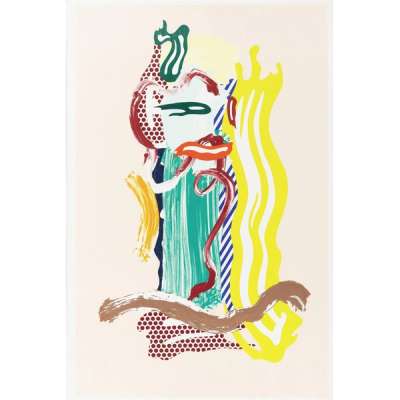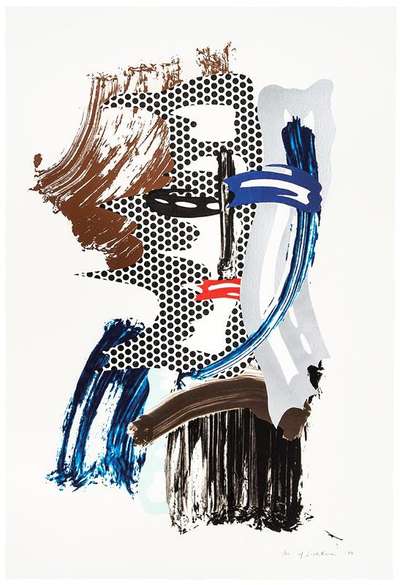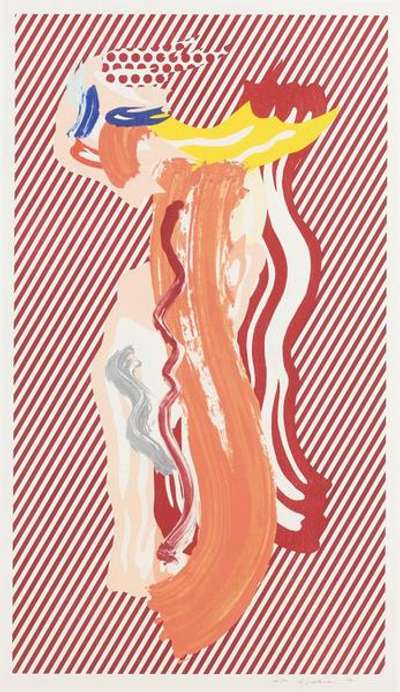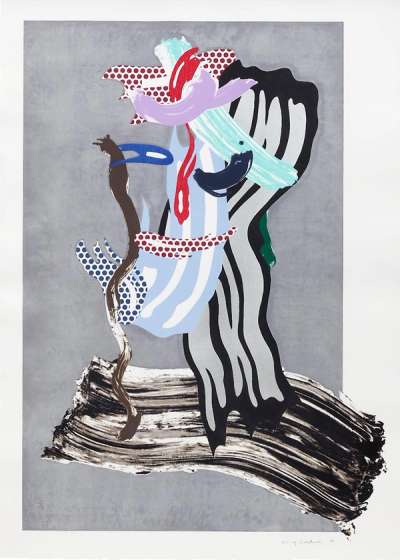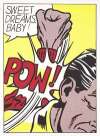Brushstroke
Faces
Roy Lichtenstein's art is famously inspired by comic book panels, but in his series Brushstroke Faces, he is also influenced by Abstract Expressionism. These works, from the late 1980s, reflect Lichtenstein's fundamental understanding of art history, as he seeks to liberate the brushstrokes from being merely constitutional parts.
Roy Lichtenstein Brushstroke Faces for sale
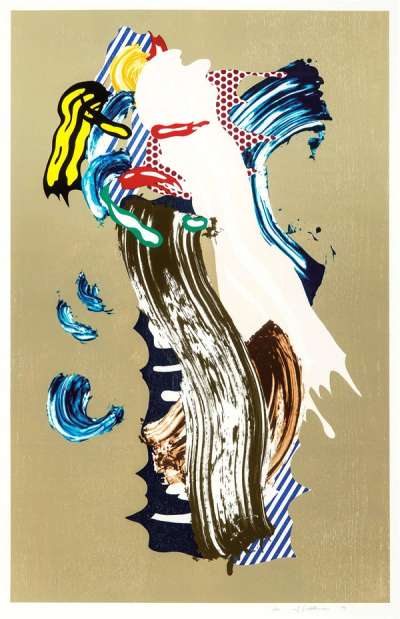
£21,000-£30,000
$40,000-$60,000 Value Indicator
$35,000-$50,000 Value Indicator
¥190,000-¥280,000 Value Indicator
€25,000-€35,000 Value Indicator
$210,000-$300,000 Value Indicator
¥3,990,000-¥5,700,000 Value Indicator
$27,000-$40,000 Value Indicator
TradingFloor
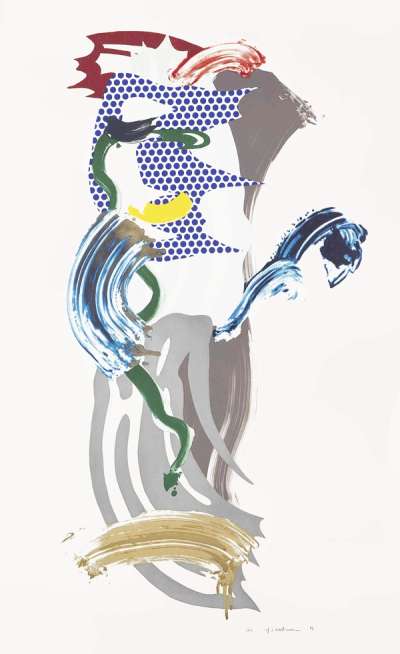
£23,000-£35,000
$45,000-$70,000 Value Indicator
$40,000-$60,000 Value Indicator
¥210,000-¥320,000 Value Indicator
€27,000-€40,000 Value Indicator
$230,000-$350,000 Value Indicator
¥4,370,000-¥6,650,000 Value Indicator
$29,000-$45,000 Value Indicator
TradingFloor

£21,000-£30,000
$40,000-$60,000 Value Indicator
$35,000-$50,000 Value Indicator
¥190,000-¥270,000 Value Indicator
€25,000-€35,000 Value Indicator
$210,000-$300,000 Value Indicator
¥4,000,000-¥5,720,000 Value Indicator
$27,000-$40,000 Value Indicator
Sell Your Art
with Us
with Us
Join Our Network of Collectors. Buy, Sell and Track Demand
Meaning & Analysis
In line with the majority of Lichtenstein’s artworks, the first renditions of Brushstrokes took their inspiration directly from comic book panels. The artist primarily utilised elements of popular culture and sought to challenge the divide between highbrow and lowbrow art. Art history proved an enduring resource for his artistic appropriations. His artworks adhered to their source material not only in order to resonate with a wider public, but also disrupt their origins and conventions from the inside out.
Lichtenstein’s notorious visual vocabulary consisted of black outlines, block colour and Ben Day dots. It is, however, relatively unknown that the late 1980s represented a period of formalistic synergy in Lichtenstein’s creative output. In Brushstroke Faces, the artist uniquely combines cartoon elements and emotive sweeps of paint on the same sheet of paper. He first embarked upon his Brushstroke series in the fall of 1965. Returning to this interest in the 1980s, Lichtenstein decided to also create sculptures as part of the new series, in addition to further expanding his prolific printmaker career.
In line with the majority of Lichtenstein’s artworks, the first renditions of Brushstrokes took their inspiration directly from comic book panels. By the time he revisited the Brushstrokes in the late 1980s, he had technically moved away from his imitation of other styles. Therefore, in his 1989 series he sought to liberate the brushstrokes from being constitutional parts of paintings. To do so, he had to dissect methods exercised by the Abstract Expressionists in the 1940s and 1950s.
The Abstract Expressionists considered brushstrokes as direct communicators of their subconscious. Lichtenstein, on the other hand, transformed the artistic gesture from a vehicle of expression into the potential subject of painting itself. He enlarged the brushstrokes and combined them with his signature mass-produced, comic book style, presenting these hybrid marks as the main composition of each canvas. He extended the application of the painterly sweeps and focused on the image he could achieve with a limited amount of brushstrokes. These expressive painterly marks were the antithesis of what he had become famous for.
Appropriating and uniting cheap print material with the so-called ‘high art’ of the past dissolved the boundaries between the two and questioned the idea of authenticity. Lichtenstein's brushstrokes made a mockery of the aspiration that every expression is unique, seeing as even the Abstract Expressionists created series, using the same motifs over and over again.
Employing a wide repertoire of methods, Lichtenstein’s use of lithography integrated screen print and woodcut in the process of manufacturing his 1989 Brushwork Faces series. Beeswax was employed for his lithographs as an alternative to printer’s ink, inducing a polished finish once printed on exquisite Saunders Waterford watercolour paper.
